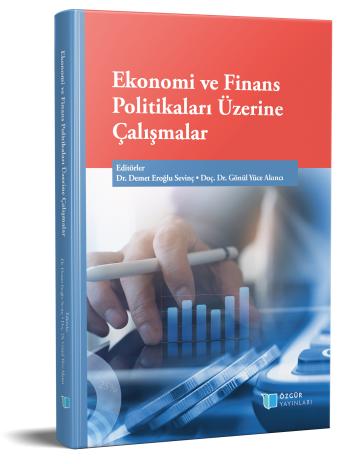
2008 İktisadi Krizinin Ardından Türkiye Ekonomisinin Kaldor Yasası Bağlamında İncelenmesi: Kalıntılarla Genişletilmiş (RALS) Eşbütünleşme Yaklaşımı
Şu kitabın bölümü:
Eroğlu Sevinç,
D.
&
Yüce Akıncı,
G.
(eds.)
2023.
Ekonomi ve Finans Politikaları Üzerine Çalışmalar.
Özet
Çalışmada iktisadi büyüme ile sanayi üretim endeksi arasındaki bağlantının Kaldor yasası çerçevesinde araştırılması amaçlanmıştır. Bu amaç doğrultusuda, 2010Q1-2022Q3 tarih aralığındaki çeyreklik verilerden yararlanılarak Türkiye için gözlemlerde bulunulmuştur. Analiz sürecinde güncel ekonometrik tekniklerden faydalanılmıştır. Bu bağlamda, güncel ekonometrik teknikler arasında birim kök testi olarak Fourier ADF, Kalıntılarla Genişletilmiş RALS-ADF ve yapısal kırılmalara izin veren RALS-LM birim kök testleri kullanılmış, eşbütünleşme testlerinden ise RALS-ADL ve RALS-EG2 yöntemlerinden yararlanılmıştır. Araştırma sonuçlarına göre, değişkenler arasında uzun dönemli eşbütünleşme ilişkisinin olduğu kanıtlanmıştır. FMOLS sonuçları sanayi üretimindeki %1’lik artışın GSYİH’yı %3.23 oranında arttırdığı yönündeyken, DOLS sonuçları sanayi üretimindeki %1’lik artışın GSYİH’yı %3.18 oranında arttırdığını göstermiştir. VECM temelli doğrusal Granger nedensellik testi sonuçları ile Dicks ve Panchenko (2006) doğrusal olmayan nedensellik analizi sonuçları birbirileriyle uyumludur. Her iki nedensellik testinden, sanayi üretiminden GSYİH’a doğru tek yönlü nedensellik ilişkisinin varlığına ulaşılmıştır. Sonuç olarak, incelenen dönem için Türkiye ekonomisinde Kaldor yasasının geçerli olduğu tespit edilmiştir.

